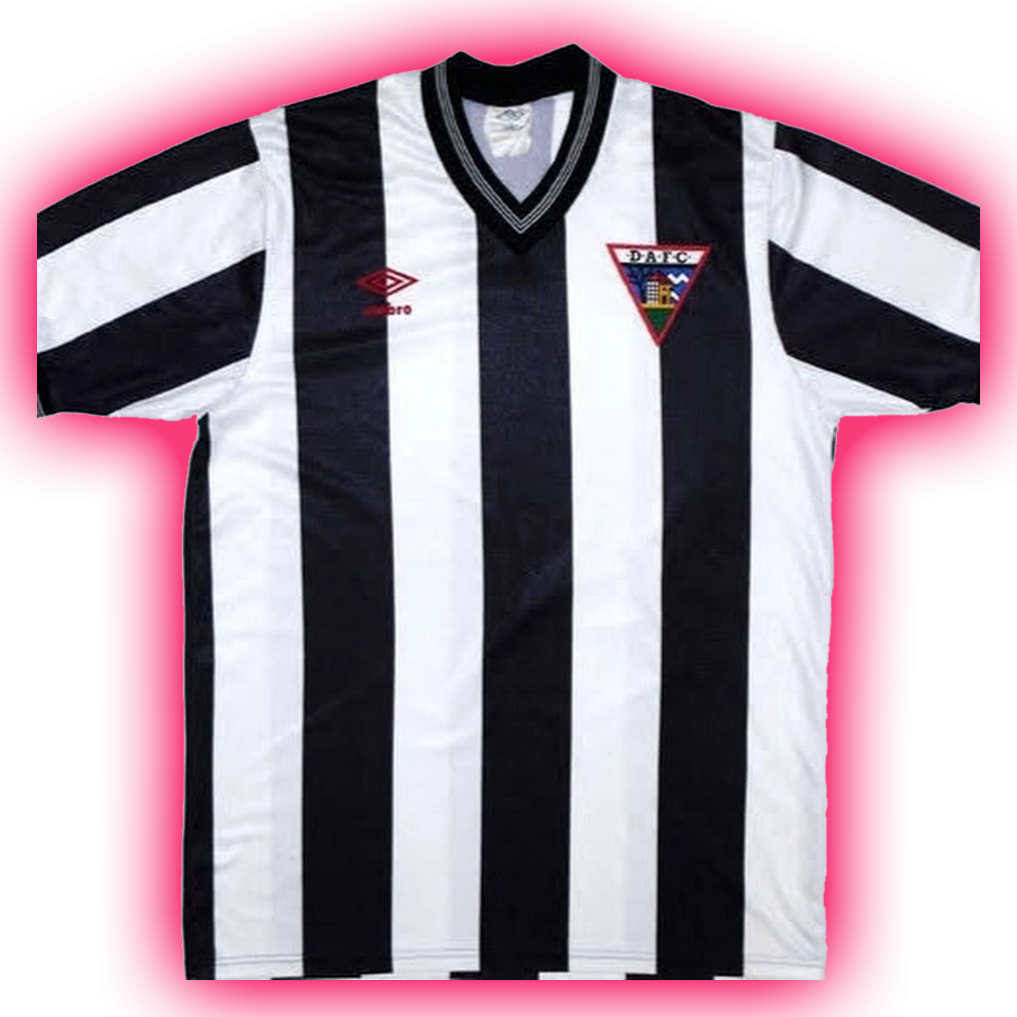Hi, I think in metric units, so almost everything is some form of a power of 10, like a kilogram is a 1000 grams, etc.
Sometimes I will think of an hour and half as 150 minutes before remembering that it is 90 minutes.
Does something similar happen to imperial units users? Because as far as I understand you don’t have obvious patterns that would cause you to make these mistakes, right?
I am of the opinion that time should be expressed in base 36, much more subdivideable and allows you to express a given time as a two decimal point number between 0.00 and Z.ZZ
Also as you might have noticed, the latest time in the day is literally the Zs, the clock would be telling you to go the fuck to sleep already.
Much as I think this would be pretty confusing, I love that Z.ZZ thing :-)
I’m trying to work this out though - so what we call 24 hours would now be 36 different blocks of time, 1-12 and A to Z, right? (EDIT - wrong! 0-9, not 1-12, duh…)
So a ‘36th’ of a day (or, actually, let’s give it a name… A “Frin”? That’ll do) would be equivalent to 24/36 of an hour = 2/3 of an hour = 40 minutes.
However would subdivisions of a Frin also be in base 36? If so, then the 36… Terps, let’s say… in a Frin, would each last slightly longer than a minute… 40/36 = 10/9 of a minute = 600/9 = 66.666666… of what we call seconds.
But of course the next subdivision would also be in base 36. So each Terp would have 36… Bops… So a Bop would last as long as a 36th of 66.666666… seconds= 66.66666/36 = 1.85185185… seconds per Bop.
36 Bops make a Terp, 36 Terps make a Frin, 36 Frins make a Day.
What a strange world that’d be!
I’d still call it hours minutes and seconds since it’s the same level subdivision,
It’d follow this progression, 0 1 2 3 4 5 6 7 8 9 A B C D E F G H I J K L M N O P Q R S T U V W X Y Z, part of the reason I like base 36 counting is because of just how many cool things just happen to come together with it, and the fact that the Alphanumeric set perfectly fits into it is one, another one I like is that “10” is a square that is also the product of two other squares.
But back to specifics, an “hour” is 40 present minutes, a “minute” is 66 and 2/3rds of a second, and a “second” is 1.85185… seconds, or 1 and 23/27ths of a second.
If I had it my way this would be paired with the Sym454 calendar to ultra-regularize everything
Yeah, I screwed up saying 1-12, I meant 0-9 but got mixed up while thinking about the next bit!
Thanks for doing the math.
36 different blocks of time, 1-12 and A to Z, right?
Not 1-12, but 0-9.
Edit: now that I’ve spelled it out, O/0 and 1/I/L (for uppercase/lowercase letters) may be problematic.
Not 1-12, but 0-9.
Duh, yeah of course, oops! :-)
My favorite thing about my microwave is that if I punch “180” into the 4 character display, it will count down 80 seconds, then switch to 59, meaning it took 180 as 1 minute, 80 seconds, not 3 minutes
Wtf
I mean, I get why it does that…
I do too, but I’ve seen plenty of microwaves that parse a 3 digit entry as total time in seconds as well.
Similar to your example, I do sometimes have a “brain fart”, thinking that X:50 means half. So, like if the microwave says 1:50, I might think that means 1.5 minutes left, but I generally catch myself pretty quickly, and it’s never caused any real problems.
I did my undergrad in a science that lends itself to lots of metric measurements, so even though I’m born and raised in the US, I’m pretty comfortable with metric and tend to set my defaults to metric.
I have always found it interesting that typing 150 or 90 in the microwave both set it for 1 & ½ minutes.
I reckon its a bit clever that it allows for both people who think in seconds and people who think is minute+seconds.Maybe we have different microwaves, but I’m pretty sure that on mine, typing 130 is the same as typing 90 (1 min, 30 sec) and typing anything larger than 99 is automatically interpreted as m:ss, so 150 would mean 1 min, 50 sec, not 1.5 min.
I am dumb. I meant to say 130 but i mixed up 1.5 being a minute and a half… We have come full circle.
I’m in the USA, and I certainly don’t use the imperial system exclusively — my (domestic) education was in metric (undergrad and grad school), and now I work at an American company and use metric exclusively.
And yes, I get confused sometimes. Often I get time and currency confused, so if something is $1.59 I think it’s a penny shy of $2, for instance.
Time units being base 12, 24, 60 are fairly convenient in that you can divide them evenly in many ways. I find this highly advantageous, turns out lots of folks did too and that’s why we use it today.
I used to get confused doing arithmetic between AM/PM until I switched my life over to a 24 hour clock. Also why folks who do time math often like in hospitals or military use that system. It’s comes down to convenience.
I think in both imperial and metric, imperial forces more fractions into my thought, which may be useful for time divisions. Fractions can definitely be quicker for centering things along a length. But when I’m designing for 3d printing (a fertile that has always been metric based) I prefer mm/cm.
It can be kind of confusing since seconds are part of SI, but hours and minutes are not. So you are kind of mixing frogs with oranges here. Even with metric units it’s not always linear and intuitive. Take for example decibel scale which is logarithmic, which is something that throws people off. Same with Richter scale. Having earthquake at scale of 3 is not half the strength of 6. It’s thousand times weaker than 6.
So in short, time keeping is done for convenience sake because 60 is divisible by a lot of numbers many times over. It can throw you off a bit if you are converting from metric to time format but there’s a simple formula for that and with some training you can do the calculation in your head. It’s a matter of practice.
Living in the US, I know what mph, inches, feet, yards and pounds all mean. Anything else I’ll end up looking up, and yes, I’ve lived here my whole life. I don’t make any mistakes because I always end up checking how my cups are in a quart or whatever.
There’s four cups in a quart! Volume measurements are base two, there’s no need to look anything up.
Sometimes I will think of an hour and half as 150 minutes
You’re still thinking of a pattern – but there is a conflation between cardinal numbers and proportion/percentage. An hour and a half is 150% of one hour.
But no, that doesn’t happen with imperial systems, because there just aren’t really patterns to that level.
I tend to lean into fractions naturally, so time fits into that well. But like, I design quite a bit in FreeCAD for 3d printing and only work with metric for stuff like that. I hate that we have not switched to metric in the USA.
Explains everything the SNL way.
deleted by creator
Time sucks ass. How many seconds in a day? 86400 or something. The whole thing feels like imperial units. I’d prefer if we’d just have percentages instead and work on fractions with special names for them.
Full disclosure, I’m a programmer.
I have a rather wide technical background and ended up pretty comfortable in both systems. I do have to do conversions in my head from km/h to mph because I’ve rarely used km/h (I’ve spent more of my time reading vehicle speed in knots).
Speaking of which, American aviation gives altitude in feet, runway lengths in feet, distance to travel in nautical miles, aircraft speed in knots, wind speeds in knots, visibility in statute miles, and temperature and dewpoint in Celsius. One of my favorite mixed unit expressions is the standard adiabatic lapse rate given as 2°C per 1000 feet.
When you’re as concerned about freezing and icing conditions as pilots are, Celsius makes sense. I prefer Fahrenheit for “what the ambient air feels like.” The scale from 0 to 100 degrees lines up pretty well with the range of temperatures found in most places people live, better than Celsius does anyway.
I learned chemistry and physics in metric. I can make technical drawings in either system, I have an intuitive grasp on what liters, meters and grams are as much as I have an intuitive grasp on what quarts, yards and ounces are.
I do carpentry and woodworking in inches though, mostly because the stock, tools and supplies available to me are designed in inches. On the peg at Lowe’s or Home Depot you might find a measuring tape with both units, most will just be inches. I do own a purely metric tape measure. So I can cut you a board 50cm long if you really want me to. It’s going to be a bigger pain in the ass to mill that stock to 20mm thick on my thickness planer, but trivial to mill to 3/4". My dado set is in fractional inches. I’ve never seen a metric router bit in person, and I’ve never seen a router collet that wasn’t 1/4" or 1/2". No I really can’t put a 6mm roundover on a board, you’re getting a quarter inch. Metric drill bits aren’t difficult to find but they’re usually for metal, so I can pretty much drill an 8mm hole in a board (split-point metal bits tend to drill holes that are a little out of round in wood). Metric brad-point bits are a little bit more specialty items, and for forstner bits, 35mm fortsner bits are specifically easy to find for installing cup hinges, otherwise they’re usually in inches.
If you were to put me in a wood shop full of metric tools and stock, it might take me awhile to get used to conventions. I’m used to thinking in terms of stock that’s 3/4" or 1 1/2" thick, for example. I’m used to talking to a sawyer in standard; what’s the metric equivalent of ordering “four-quarter” boards?
what’s the metric equivalent of ordering “four-quarter” boards?
We have a lot of standard sizes that seem to be based on imperial - 12mm (1/2inch), 16mm (5/8inch), 19mm (3/4inch), 32mm (5/4inch) etc.
If you’re actually interested in taking a look, here’s a link to the dressed timber section of Australia’s hardware capital - Bunnings.
I think you just made my point for me. Are those finished milled boards or rough sawn?
In America we refer to rough sawn and finished boards differently; a rough milled board 1 inch thick and 4 inches wide is 4:4x4 “four-quarter by four”. This board will be milled to 3/4" by 3 1/2" and called a 1x4 or a “one-by-four.” If I tell a sawyer “I’m looking for some six-quarter oak” he knows I’m looking for thicker than usual rough cut stock. “I’m looking for some two-by-sixes” implies I’m looking for pre-milled construction lumber. I can say a lot about the wood I want and the condition I want it in with not many words…to an American sawyer, anyway.
Oh, and then there’s board feet! Pre-milled boards bought from retailers like Home Depot or Lowe’s are sold price-per-each because retail, but you go to a lumber yard or sawmill you’re going to pay by volume in units of “board feet.” A board foot is a 12 inch wide, 12 inch long and 1 inch thick board, or 144 cubic inches. Which sounds like a bigger pain in the ass than it is.
That’s ‘dressed all round’ what I’m assuming is finished milled. I’m a very amateur diyer - I’d imagine that if you went to a timber yard here they’d probably have a good idea what you were after. Just read online that most bulk wood is bought by the cubic metre, but all dimensioned wood is by the linear metre.
Yeah, put through the jointer/planer to make the board straight, square and true. Sometimes called “surfaced 4 sides” or S4S.
Not really. I would be curious if other people immersed in SI only have similar issues to yours. Minutes and hours are based off of multiples of 12, and with feet and inches that’s already one we deal with regularly.
no
only time is with some like a microwave where you type in multiple units for the same input
ie 90 is equivalent to 130









